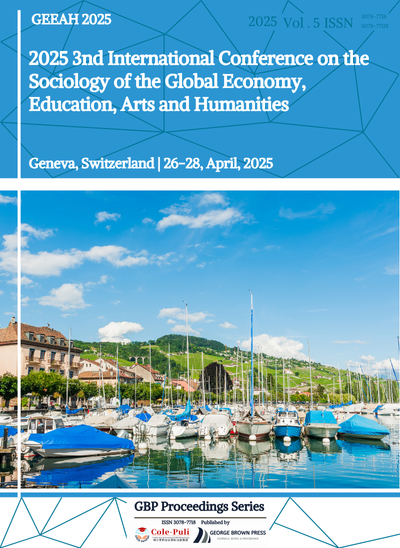Analyze the Feasibility of Implementing Traffic Congestion Tax in the First-Tier Cities
DOI:
https://doi.org/10.71222/mwxz6338Keywords:
public transport system, car ownership, relevant traffic policies, foreign countries, countermeasures, the content of the policyAbstract
With the economic expansion of first-tier cities and the increase of car ownership in recent years, the road congestion in first-tier cities is not optimistic. This paper will review the current domestic congestion situation and countermeasures, and refer to foreign countries that have successfully implemented congestion tax to illustrate the demand and legitimacy of charging congestion tax in China's first-tier cities. At the same time, with reference to the specific programs of other countries, make a preliminary conception and design for the content of the policy, and draw an appropriate charge based on scientific calculation and principle. It does not mean that charging congestion fees would abolish the construction of the public transport system, and urban residents' travel still depends on the subway and the bus to a considerable extent. Therefore, we emphasize that we should pay equal attention to the implementation of congestion tax policy and the construction of public transport system to achieve the purpose of solving road traffic congestion to the greatest extent under the joint action of the two.
References
1. Y. Guo, Z. Tang, and J. Guo, "Could a smart city ameliorate urban traffic congestion? A quasi-natural experiment based on a smart city pilot program in China," Sustainability, vol. 12, no. 6, Art. no. 2291, 2020, doi: 10.3390/su12062291.
2. A. Baranzini, S. Carattini, and L. Tesauro, "Designing effective and acceptable road pricing schemes: Evidence from the Geneva congestion charge," Environ. Resour. Econ., vol. 79, pp. 417–482, 2021, doi: 10.1007/s10640-021-00564-y.
3. A. M. Khan, "Reducing traffic density: The experience of Hong Kong and Singapore," J. Urban Technol., vol. 8, no. 1, pp. 69–87, 2001, doi: 10.1080/10630730120052181.
4. M. Goh, "Congestion management and electronic road pricing in Singapore," J. Transp. Geogr., vol. 10, no. 1, pp. 29–38, 2002, doi: 10.1016/S0966-6923(01)00036-9.
5. J. Leape, "The London congestion charge," J. Econ. Perspect., vol. 20, no. 4, pp. 157–176, 2006, doi: 10.1257/jep.20.4.157.
6. J. Eliasson, L. Hultkrantz, L. Nerhagen, and L. S. Rosqvist, "The Stockholm congestion—charging trial 2006: Overview of ef-fects," Transp. Res. A Policy Pract., vol. 43, no. 3, pp. 240–250, 2009, doi: 10.1016/j.tra.2008.09.007.
7. M. Börjesson, J. Eliasson, M. B. Hugosson, and K. Brundell-Freij, "The Stockholm congestion charges–5 years on: Effects, ac-ceptability and lessons learnt," Transp. Policy, vol. 20, pp. 1–12, 2012, doi: 10.1016/j.tranpol.2011.11.001.
8. E. Croci, "Urban-road pricing: A comparative study on the experiences of London, Stockholm and Milan," Transp. Res. Procedia, vol. 14, pp. 253–262, 2016, doi: 10.1016/j.trpro.2016.05.062.
9. E. Struyf, C. Sys, E. Van de Voorde, and T. Vanelslander, "Calculating the cost of congestion to society: A case study application to Flanders," Res. Transp. Bus. Manag., vol. 44, Art. no. 100573, 2022, doi: 10.1016/j.rtbm.2020.100573.











